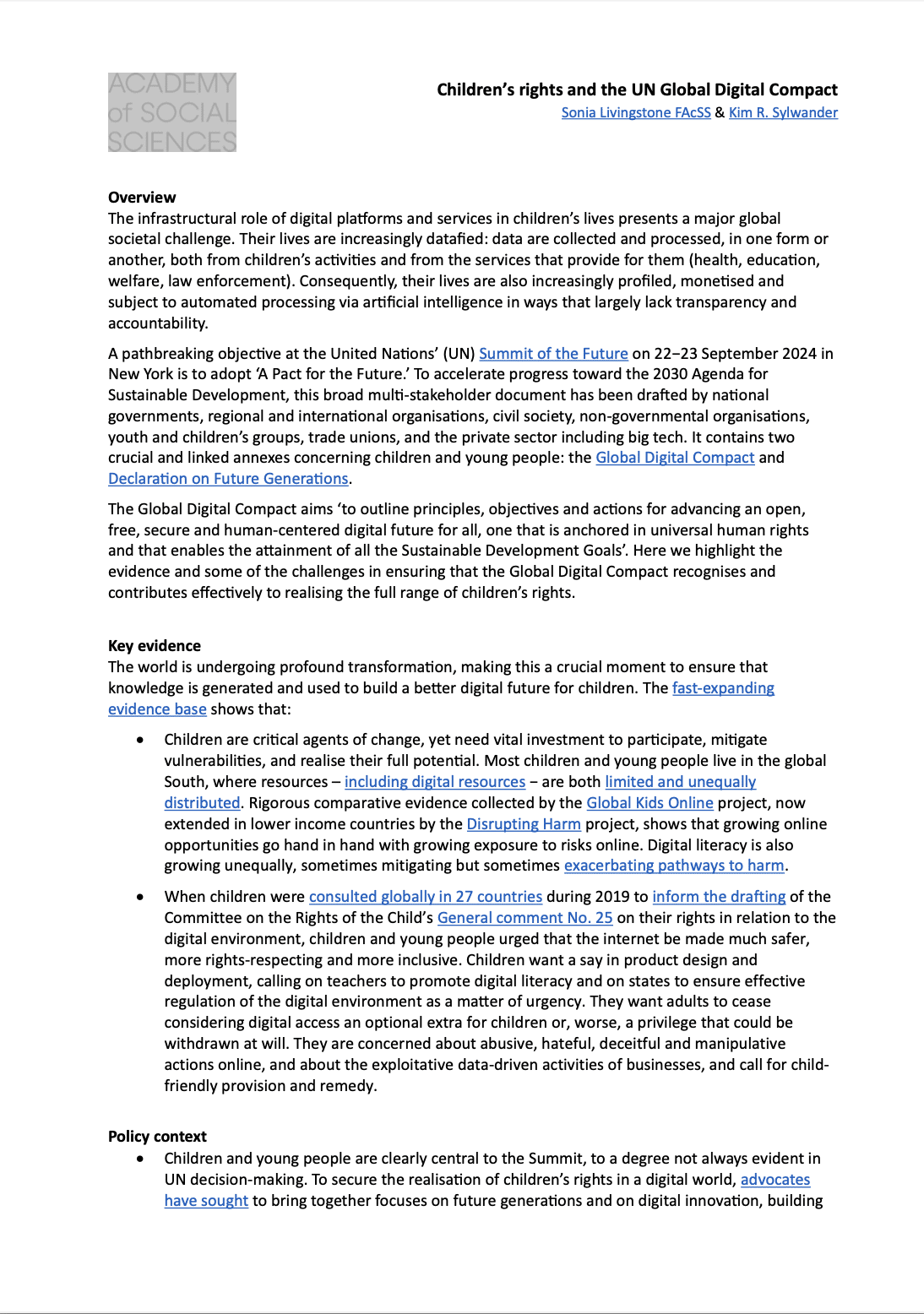Expert briefing: Children’s Rights and the Global Digital Compact
This is a briefing on the UN’s Global Digital Compact written by Digital Futures for Children (DFC) centre Director Professor Sonia Livingstone and DFC researcher Dr Kim R. Sylwander, and published by the Academy of Social Sciences.
The infrastructural role of digital platforms and services in children’s lives presents a major global societal challenge. Their lives are increasingly datafied: data are collected and processed, in one form or another, both from children’s activities and from the services that provide for them (health, education, welfare, law enforcement). Consequently, their lives are also increasingly profiled, monetised and subject to automated processing via artificial intelligence in ways that largely lack transparency and accountability.
A pathbreaking objective at the United Nations’ (UN) Summit of the Future on 22−23 September 2024 in New York is to adopt ‘A Pact for the Future.’ To accelerate progress toward the 2030 Agenda for Sustainable Development, this broad multi-stakeholder document has been drafted by national governments, regional and international organisations, civil society, non-governmental organisations, youth and children’s groups, trade unions, and the private sector including big tech. It contains two crucial and linked annexes concerning children and young people: the Global Digital Compact and Declaration on Future Generations.
The Global Digital Compact aims ‘to outline principles, objectives and actions for advancing an open, free, secure and human-centered digital future for all, one that is anchored in universal human rights and that enables the attainment of all the Sustainable Development Goals’. Here we highlight the evidence and some of the challenges in ensuring that the Global Digital Compact recognises and contributes effectively to realising the full range of children’s rights.

